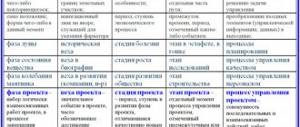Vilfredo Pareto is the author of the sensational and world-famous 80/20 principle.
An Italian economist noted in 1897 that:
- 80% of Italy's wealth belongs to 20% of the population;
- 20% of the bushes in his garden produce 80% of the total harvest.
Pareto noticed that the effect of proportion extends to other aspects of life.
Unfortunately, many great discoveries find application many years later. The authors fail to convey their significance to their contemporaries. Likewise, Wilfredo was unable to convey the benefits of the principle of the 80 to 20 law.
Therefore, Joseph Giurano is deservedly considered the second author of the famous principle. He was impressed by the Italian's discovery and based it on the Pareto Principle.
To explain it in simple words, the essence of the principle is as follows:
In order to get the job done to the maximum, it is enough to use one fifth of all resources. Anything that will be done from above is not worth the effort. Therefore, before starting work, it is necessary to clarify which actions will give maximum efficiency.
Deeper about the Pareto 80/20 principle
Many asymmetric examples can be given. But this idea needs to be used with caution. Many people are mistaken in thinking that 20 and 80 add up to make 100. Numbers don't do that!
Let's look at a simple example. Workers, 20% of them, create 30% of the result. Can they? It could be 50, 60, 80 or 100%. In a team of 100 people, let 20 workers do all the work. And the remaining 80 workers do nothing. It turns out that it was 20% of the workers who did 100% of the work.
Therefore, the 20/80 rule, or vice versa, is too rough a guide to a typical distribution. Even the numbers themselves, 20 and 80, should not and are not accurate. Most things in the world and in the private lives of each of us are distributed unevenly. It is a fact that some people contribute more than others.
What does uneven distribution of things mean? The key factor here is that each unit of work cannot contribute the same amount.
Of course, it would be ideal: every employee put in the same amount of effort, every feature was equally valued by users, every miss was equally important. Planning is then very easy! But in reality this is not always the case.
According to the Pareto rule, most things are not evenly distributed . Out of 10 ideas, 1 will be successful. This successful thing/idea leads to the green line, the majority of the group's influence.
But, there is always a desire for life to resemble the red line. Where the investments of each part go equally. And this often doesn’t always happen.
Zipf's principle and Juran's rule
In 1949, J.C. Zipf, a professor of philology at Harvard University, rediscovered and formulated Pareto's law. He revealed the following pattern: any resources, be it people, time, knowledge or something else, tend to self-organize in such a way as to minimize the cost of producing the final product. Thus, 20–30% of efforts give 70–80% effectiveness. This discovery confirms Pareto's law.
Around the same time, an American engineer of Romanian origin, Joseph Moses Juran, once again confirmed the correctness of the Pareto principle. Studying the ratio of normal and defective products in production, he came to the conclusion that knowledge of this law will help to significantly reduce the number of defects and improve the quality of manufactured products.
Juran noted that the 20/80 principle applies not only to the economic or industrial sphere, but also to many other processes. At first, Yuran's theories did not interest American economists, so the researcher went to Japan, where his ideas were in demand. Over time, the Pareto principle, discovered and formulated by Juran, nevertheless began to be actively used in the industrial sector of the United States to create methods for optimizing production.
80/20 lifestyle
To start living 80/20 today, all you need to do is focus your energy on what you love.
A part-time job is a part-time passion.
Many people work full time and work after hours to pursue a business, hobby or creative talent. If this applies to you, then most likely your ratio is not 80/20, but most likely closer to 20/80.
You spend too much time doing a job you don't enjoy, you're probably not very motivated to do it well, so you're not in the vital 80/20 of employees for that company, and by the time you get home, you're You will be too tired to spend time on your hobbies. You feel like you're going nowhere fast.
This lifestyle is not suitable for anyone, since all relationships fall into the 80 percent that produce 20 percent of the value. You get very little out of it, and the people you work for get very little out of you.
If all of the above describes your situation, then you need to start changing these ratios. Reduce the time you spend doing work you don't enjoy and increase the amount of time you spend doing the things you love.
You'll say you can't do it because you need the money, but I suspect you don't actually need as much as you think.
Most people can live off part-time work, but choose to work more because they want more. You may see your peers enjoying material goods, which creates desires in you.
Your wants begin to outweigh your needs, which is probably the biggest pitfall in our modern, advertising-driven, materialistic society.
Of course, you don't have to live like a beggar, but your real happiness comes from spending your time doing the things you enjoy most, not making more money.
Chasing a dollar for the sake of a dollar doesn't work. Chasing your passion often leads to more income because the quality of your products improves.
Focus on increasing investment in your core strengths and you will reap the rewards.
Reduce your work hours to three days a week and spend more hours on getting clients, booking concert tickets, finding time to write a novel, developing your invention, coding your software, finding investors, or whatever. you really want to do.
For those of you who have no intention of turning your passions into profitable, money-generating ventures, this is still a good option. If money is not your main concern, but music is, for example, why do you spend so much time trying to make more money than you need?
Yes, it is important to plan for the future and build assets, but obviously for your musical soul this is not something that should take up the majority of your time and energy. You may be happy without that mansion by the sea, and you'll never know if you spend more time on your music, eventual album sales might one day lead to that mansion by the sea.
If not, then at least you will be much happier if you follow your passion rather than money.
If financial freedom is important to you and most of your plans are considered at this stage as the first stage and work on converting your passions into income-generating offerings.
Grow your business client by client, gig by gig or sale by sale. Continue to adjust your work-to-hobby ratio as your business grows to support you so you no longer need your income from work. Look for 80/20 action in everything you do and eliminate inefficiencies whenever you can.
Where does the Pareto rule apply?
The famous Pareto method of 80 by 20 is applicable to all areas of human life. From economics to everyday relationships. Let's look at this in more detail using specific examples.
Pareto's Law in Sales
- Most purchases account for 20% of the assortment in the store. But if you remove other products from the shelves, sales will immediately drop. People need the illusion of choice.
- 80% of the profit comes from one fifth of all orders. This means that it is worth paying more attention to them, this will increase profits.
- 20% of clients bring in the main revenue.
- 20% of the time is spent on sales, and the rest goes only to preparing for them.
- 80% of complaints and problems are caused by only 20% of customers.
Are you familiar with the situation: a lot of fuss, but no money? As a rule, the 20% of customers that bring in the bulk of the profit are not the 20% that create problems.
This suggests that you should not grab every client. You have every right to refuse problem clients. Do this and then you can breathe easy and be able to pay more attention to your loyal customers.
It is also necessary to analyze the working time spent on clients that do not bring large profits. Work with those that bring you more income or take less time to service.
Pareto's Law in Management
- Only 20% of employees work well, all the rest are dragging their feet.
- 80% of the company's total profit comes from only 20% of conscientious employees.
- Only a fifth of employee actions produce results.
To increase efficiency, workers need to create a daily to-do list, including everything from small tasks to large projects. Then distribute them by degree of importance. And start with the 20% most important.
Pareto's Law in Advertising
- 80% of leads come from only 20% of advertising companies. This means that a huge share of advertising money is wasted.
- 80% of the information is meaningless, it does not bring any benefit to you. Limit viewing of stupid sites and unnecessary books.
- In only 20% of the time, 80% of transitions to the site are completed and leads are closed.
- 80% of income is generated only 20% of the time.
In order for advertising to reach the consumer without losing the budget, determine in which 20% of regions the main sales occur. Next, identify 20% of the keywords that account for conversion and create a competent proposal.
And also study at what time and day of the week 80% of transitions and views occur.
Pareto's Law in Software
- When websites malfunction, errors are found in only 20% of system codes. That is, to fix it, you need to fix a small part, and not rewrite the entire program.
- Of all software users, only 20% can truly appreciate it.
When building software, 80% of the time is spent doing 20% of the work. Programmers often fail to meet deadlines. Since too much time is spent on creating any little thing that is important for the customer, because it was not included in the plan.
Pareto's law in the family budget
- 80% of purchases are not used. Open your closet and see for yourself that most often you only wear one fifth of your wardrobe.
- 80% of expenses from the family budget come from 20% of expense items. To save money, you should review your budget and cut the largest categories.
Since 80% of the family budget is spent on 20% of purchases, it is worth reviewing cost categories. Usually these are food and clothing. If your goal is to save and accumulate, then reduce your expenses by that same expensive 20%.
And if you can’t do this, then give up the second group of expenses, most often travel and entertainment.
Pareto's Law in Human Relations
The famous principle can also be applied in everyday life.
- Talking to 20% of the people around you is actually good for you.
- You practically don’t communicate with the remaining 80% - you don’t need them, because they don’t bring any benefit.
You should reconsider your social circle. Only a small part of your environment is good for you.
Most just drag you down. From communicating with them you will get nothing but another portion of negativity. Spend your precious time only on those people with whom you grow and develop.
Also limit your time watching news. The same law applies here. Most of the information will be useless and negative. If you are interested in specific news, subscribe to it online.
Follow these simple rules and you will be surprised how much your quality of life will improve in the very near future.
Pareto principle in everyday life
It is impossible to radically improve the quality of life without changing the way you think and act. It has long been noted that in the pursuit of happiness and success, in most cases we make much more effort than necessary. In fact, in order to stop the daily “mouse fuss” and find a feeling of happiness in the near future, it is often enough to do only the little that gives us pleasure.
As Richard Koch, author of the bestselling books “The 80/20 Principle” and “Living by the 80/20 Principle,” explains, the principle is based on two main postulates: A. The Law of Focus: Less is more. B. Law of Progress: More is created through less.
The idea of focus comes down to the fact that correct focusing and putting 20% of our efforts into action allows us to realize 80% of our desires. Efforts made beyond this 20% often result in wasted time and effort. Correctly focusing attention and effort means being able to identify things that are of primary importance to us, the main values that fill life with meaning and vibrant content. With this skill comes an understanding of the law of focus - less is more.
The idea of progress states that we can achieve and gain more with less time and effort. We really don't have to do everything. It is necessary and sufficient to learn to do only what brings results. This is the essence of the Pareto principle, which in its original version sounds like this:
“20% of effort produces 80% of the result, and the remaining 80% of effort produces only 20% of the result.”
Learning to use this rule, ingraining it in habits, way of thinking and actions means completely and qualitatively changing your life, gaining those advantages that 80% of our surroundings pass by every day and habitually. With a creative, correct approach, the principle works in business, self-improvement, relationships, social models - almost everywhere where a person and his vital interests are present in one way or another.
conclusions
There are only 24 hours in a day. If you try to cover everything at once, it will be difficult to achieve excellent results. Not every activity you spend time and energy on is equally important. Think about tasks in advance and rank them by priority , focusing on the specifics of the profession, level of employment, interests, and skills.
Try to find those most effective 20% and direct maximum efforts to them. Tackle the most important processes first, and then refine and polish the result. It is better to complete one task than to “almost finish” several.
If you wish, you can achieve greater results with less cost and effort by making your actions more focused and conscious. The 80/20 principle will help increase personal productivity, improve business results, reduce workload, free up resources, and create an effective marketing strategy. But you should not focus only on the Pareto law. This is not a panacea and in some situations such principles may not work.
How the 80/20 principle works
It is worth looking around carefully and impartially and we will come to the conclusion: in various spheres of life, the Pareto principle, to some approximation, manifests itself with amazing consistency. The accuracy of this relationship may vary, but the main conclusion always works: the majority of effects manifested are the result of a minority of causes.
The Pareto principle is applicable both in a professional environment and in personal life. The main thing is to understand that at every moment in time we can determine and use for ourselves that little that can give us a lot. On the other hand, by simplifying life, by sweeping out of it what does not work and does not correspond to our values, we can more easily identify the small things that are valuable and achieve the desired big results with their help.
Example. You can spend the day with a loved one, but in the evening you hear from him that you have been paying almost no attention to him lately. Or you can give him just one hour instead of four, and he and you will remember this hour for the rest of your life. The secret is simple: in the first case, you actually didn’t devote a single minute to it, periodically being distracted by TV, phone calls or discussing empty, unimportant things. In the second, they gave the person all their attention, placing emphasis on the quality of communication, and not on the number of hours spent together.
In solving relatively simple problems, where the main criterion for success is a quantitative factor, indeed, it is often possible to determine for yourself those 20% of reasons that will allow you to achieve 80% of the result or get closer to the ratio of 20/70, and in exceptional cases, to 10/90 . Strictly speaking, it is more correct and useful to get rid of the rigid percentage ratio and be guided by the logic of the principle itself. And this is quite enough to get closer to your goal much faster, more efficiently and more comfortably. Let's back this up with examples...
Benefits of Pareto Chart
The main advantages of analyzing a graph using a Pareto chart include:
- High speed of construction and analysis;
- Ease of implementation;
- Ability to work in Excel;
- Ease of analysis and finding priority tasks.
Disadvantages of the Pareto chart
Any method has its drawbacks. The Pareto chart is no exception.
The main disadvantages include:
- Lack of solutions for minor problems.
- Poor quality collection of initial information to construct a diagram.
The 80/20 principle and language learning
In the arsenal of many existing languages, you can count up to more than a million words. From the point of view of the Pareto principle, the word superfluous is not an exaggeration at all. For real everyday communication, a few hundred and, even more so, a few thousand are often enough for us.
Having replenished your vocabulary with several thousand frequently used words, you will be able to communicate at an everyday level. Of course, to communicate on highly specialized topics you will have to expand your knowledge, but in all other cases this additional knowledge will most likely remain unclaimed. This way, you deliberately lower the bar by focusing on the speaking aspect and achieve the result you want without much effort in just a few months. The main condition for achieving results is not the dull memorization of hundreds of stillborn words, but the practice of live communication with native speakers.
Preface to the second edition
I wrote this book in South Africa in 1996 and came to London in the summer of 1997 to promote it. I remember going to radio stations and television studios, hoping that at the last moment they would put me on the air. However, no one seemed to show much interest in the findings made at the end of the 19th century by an unknown Italian economist. “Oh,” moaned one then-celebrity on a talk show, “what are you even doing here if you didn’t come up with this idea yourself?” I would like to talk about the influence of St. Apostle Paul and the authors of the Gospel in popularizing the ideas of a certain Jesus of Nazareth, who otherwise would have remained unknown. I would like to say this - but then I did not find what to answer.
I returned to Cape Town completely depressed. And then a small miracle happened. The British publisher who endorsed the work, a man known for his ability to see beyond the positive, faxed me a message saying that despite the PR fiasco, my book was “selling very well.” In fact, it sold over 700,000 copies worldwide and was translated into 24 languages.
A century after Vilfredo Pareto observed the consistently one-sided relationship between inputs and outputs, and a decade after this book reinterpreted the Pareto principle, I think it can already be said that the principle has stood the test of time.
I received a lot of feedback from readers and reviewers, mostly positive. Around the world, large numbers of people—perhaps hundreds of thousands—have found this principle useful in their work and career, as well as in life in general.
The 80/20 Principle has two almost opposite positive aspects. On the one hand, this is a statistical observation, a confirmed model: solid, quantitative, reliable, stable. This principle appeals to those who want to get more out of life, beat the crowd, increase profits or reduce effort or costs in pursuit of benefits, seriously increase efficiency, defined as the derivative of costs divided by results. If we can identify a few cases where the difference between the results obtained and the effort expended is significantly greater than the normal difference between the two components, we can significantly improve the efficiency of any business. This principle allows you to increase your efficiency without resorting to the tyranny of overtime.
On the other hand, this principle also has a completely different side - soft, mystical, supernatural, almost magical: the same digital relationships always appear, related not to efficiency, but to everything that makes our life complete. The feeling that we are connected to each other and to the Universe by some mysterious law that can be used and which can change our lives evokes wonder and awe.
Looking back, I think the reason my book received such a response was because it expanded the scope of this principle. It was previously known to businesses who used it to improve operational efficiency. But to my knowledge, this principle has never before been used to improve the quality and richness of life. It was only later that I fully understood the dual nature of this principle - the surprising but beautiful tension between its two sides: hard efficiency and soft life improvement.
Of course, not everyone accepted my interpretation of the Pareto principle. I was surprised by the amount of controversy the book generated. It had its ardent supporters, and a huge number of people wrote to me that the book changed not only their professional lives - but their lives in general. However, there were many people who did not like the extension of this principle to the “softer” side of life - and they told me so clearly and eloquently! These objections were stunned, but then I thanked my opponents. They have caused me to think more deeply about the principle and, I hope, to gain a greater understanding of its dual nature.
What's new in this edition?
First, I want to say that I removed the final chapter, “Return to Progress,” from the book. This was a clearly unsuccessful attempt to apply the 80/20 Principle to society and politics[1]. While every other part of the book has attracted both positive and negative comments, this chapter seems to have fallen on completely barren ground. The only part of it that I have kept is the conclusion, which is a call to action addressed to all people.
I replaced it with a completely new chapter, “The Yin and Yang Principle.” In it, I cover the main topics of reviews, conversations, letters and emails that have appeared in the ten years since the first edition of the book; I describe in detail and group the best critical reviews of the principle. I believe this brings to a new level of awareness and understanding of the power of this principle.
It remains for me to thank everyone who took part in the serious discussion of the 80/20 Principle. Let this discussion continue - and thank you all very much. I may have influenced your life, but you also influenced mine, and for that I am very grateful.
Richard Koch
Estepona, Spain, February 2007
Pareto's Law and Diet
In order to achieve dramatic improvements, it is enough to change your daily diet at the initial stage of maintaining the diet by only 20%. So, if you are a supporter of the paleo diet (the diet of our ancient ancestors), to achieve the effect, it is enough to exclude dairy and grains from the diet. Then whether you continue to eat legumes or not will not affect the final result. It is important to use the principle here - not to think about how many kilograms you will lose in a month if you completely rebuild your entire diet, but to exclude several ingredients from your daily menu that can bring tangible results in the foreseeable future. Further, based on it, you can achieve big changes in the future.
Why spend hundreds of dollars on exotic juices and cleanses when you can eliminate grains and dairy for at least a month? Experiment and see for yourself...
Pareto Distribution: 5 Steps to Identify Important Causes
- Create a table listing the factors and their frequency as percentages.
- Arrange the lines in descending order of importance of the reasons, that is, the most important reason first.
- Add a column with cumulative interest to the table.
- Create a Pareto chart.
- Draw a line at 80% increments along the Y axis parallel to the X axis. Then drop the line at the point where it intersects the curve on the x axis. This point on the x-axis divides the graph into important causes on the left and less important causes on the right.
This is a simple example of a Pareto chart using sample data showing the relative frequency of problems. It will allow you to see which 20% of factors cause 80% of the problems and where you should focus your efforts to achieve maximum effect. In some ways, the construction principle is similar to SWOT analysis, which also allows you to see the strengths and weaknesses of a business.
The value of the Pareto principle for any project is that it reminds you to focus on the 20% of things that matter. Of what you do during your project, only that 20% really matters. They are the ones who give 80% of the results. Identify these things first and focus on them, but don't completely ignore the remaining 80%, their turn will come later.
Don't forget that effective implementation of Pareto analysis requires a reliable data source. When done correctly, analysis can help you break down a larger problem into smaller pieces and focus on where it's worth putting in the effort.
Pareto's Law and Fitness
Tangible and pleasant progress in fitness can be achieved anywhere, without a complex training program, outside a gym equipped with hardware and electronics and a “currency” trainer. You can achieve results using your own weight and sprinting. You just need to start working on a few exercises, concentrate on them and make them a habit. Work with your weight for a month for 20 minutes a day, combining exercise with diet and sprints, and then evaluate the result.
Pareto method: from A to Z
The Pareto method involves performing a Pareto analysis. It is as powerful a tool for quality assurance and decision making as cohort analysis. When implemented correctly, Pareto analysis can help identify major pitfalls in any process flow. Which, in turn, will improve the quality of the product and business as a whole. This is a great approach to quickly visualize problems. As a result, all the information you need is right in front of you, and you'll see how to improve your work.
The Pareto principle is based on the 20/80 rule, which states that a large number of problems—80—are created by a relatively smaller number of root causes—20. The numbers may vary—for example, 20% of a company's products may generate 120% of its profits.
Pareto's Law and Business
Contrary to the popular belief that “the customer is always right,” in practice this rule often does not work. However, customer service managers often receive instructions from management to retain clients at literally any cost, even if they delay settlements, accompanied by constant dissatisfaction with staff. With minimal conversion, the real loss from one such client can amount to tens of thousands of dollars. Concessions in the form of loyalty programs, etc., do not change the situation. Such clients certainly fall into the category of those who are determined to pay less and get more, slowly but surely tightening the noose around the neck of even the most successful business.
In order to radically change the situation, it is enough to simply get rid of such clients, adding preferences to those remaining who are loyal to the company and bring it a constant income, without burdening management with headaches.
Interesting statistics confirming the effectiveness of the 80/20 principle have been collected for many areas of our lives. Eg:
- If you're a blog author, you've probably noticed that 80% of your valuable traffic comes from 20% of your posts.
- If your business is related to trade, then you get 80% of your profit from selling 20% of your product line.
- The item spending 20% of your bills is 80% of your total expenses.
Having a website on the Internet, you don’t need to focus on all marketing channels - it’s enough to evaluate the existing statistics on the main sources of traffic for 90 days and concentrate all your attention and resources on them. The rest, at least temporarily, can be left behind. Evaluate the result after 90 days.
Analyzing sources of income and comparing it with the amount of effort applied per person sometimes leads to unexpected results. You may find that you are systematically passing up an easy, accessible, and fast income stream that is literally just an arm's length away. By focusing on the flows that significantly cover the entire investment, at the same time get rid of unprofitable or sluggish unpromising channels. Evaluate the result after 3 months.
There are no and cannot be perfect people, as well as the results of their work. In most cases, it is enough to have a good result and remember that the perfectionist inside you and enjoying absolute power over your time, emotions and energy is the strongest inhibitor on the path to your effectiveness and satisfaction with life. Learn to settle for “good” rather than “flawless.”
Any of our undertakings can be analyzed from the point of view of the Pareto principle and we can determine for ourselves the key points of application of efforts. Caution in using the Pareto criterion is required when we have to carry out a complex, responsible task, where we will have to give our all. Here, the quality of the result is given a key priority and sacrificing time and effort even in one, even difficult, aspect means questioning the success of the entire endeavor.
There are exceptions to every rule. Perhaps you are a conductor, general designer or, for example, a sign language interpreter voicing text at a memorial ceremony. In this case, knowing the basics of your profession in detail does not imply compromise. Unless, of course, you are interested in communicating with your audience in sign language, like this guy:
How does theory help improve personal productivity?
Using Pareto principles, you can greatly improve your own productivity. Any employee or manager can do this, which will definitely benefit the entire company. The rules of the law are especially relevant for those who do not know how to plan time and are used to being spread out on 100 things at the same time.
The pattern proves: many people spend 80% of their time on meaningless nonsense and end up accomplishing nothing . They spend hours scrolling through social media feeds, looking at all sorts of photos on the Internet, instead of focusing on important tasks.
Learn to identify the main ideas and factors that require a lot of energy. Disassemble the little things according to the residual principle.
Step-by-step algorithm of actions:
- Create task lists for the day, week, month. Analyze them and rank them in order of importance. The most convenient way to evaluate efficiency is in the Excel spreadsheet editor or special planner applications.
- Calculate the energy and time required for each task. Rate it on a scale from 1 to 10 depending on the complexity and labor intensity of the process.
- Calculate the average between the two types of costs. To do this, add them up and divide the resulting amount by 2.
- Assess current and future performance (R1 and R2). Current is a useful result that exists now, future is a predicted effect that will probably occur later. Give ratings on a 10-point scale and determine the average value (R).
- Calculate the effectiveness of each task (Y) by dividing the performance indicator by the average cost.
Eisenhower's Priority Matrix
An example of a daily to-do list for the head of the sales department:
- fitness. Time consumption (T) – 5; energy consumption (E) – 7; (T+E)/2 = 6; R = 6.5; Y = 1.08;
- meeting, planning meeting. T = 6, E = 9; average costs = 7.5; R = 4; Y = 0.5;
- routine operations, working with subordinates. T = 7; E = 8; average costs = 7.5; R = 8; Y = 1.1;
- control of orders. T = 6; E = 7; average costs = 6.5; R = 7; Y = 1.08;
- processing incoming correspondence, preparing reports. T = 8; E = 7; mean = 7.5; R = 6; Y = 0.8;
- checking mail. T = 4; E = 2; average = 3; R = 2; Y = 0.7;
- strategy adjustments. T = 7; E = 7; average = 7; R = 8; Y = 1.1;
- grocery shopping. T = 4; E = 4; average = 4; R = 2; Y = 0.5;
- House cleaning. T = 5; E = 5; average = 5; R = 3; Y = 0.6;
- study of professional literature. T = 2; E = 3; average = 2; R = 5; Y = 2.5.
For convenience and clarity, it is better to arrange the list in a table, dividing the data into individual columns and cells. Rank tasks by effectiveness. The higher the score, the more priority the matter. In the list from the example, the most effective were working with subordinates, adjusting strategy, monitoring assignments, studying profs. literature. Ineffective – meetings, cleaning the house, buying groceries, checking email. It is these actions that need to be reconsidered or completely abandoned and delegated to others.
The main advantages of using the Pareto principle in business and life:
- Allows you to determine the difference in the value of tasks.
- Shows what needs to be emphasized.
- Identifies tasks that should be delegated to relatives, friends, and colleagues.








